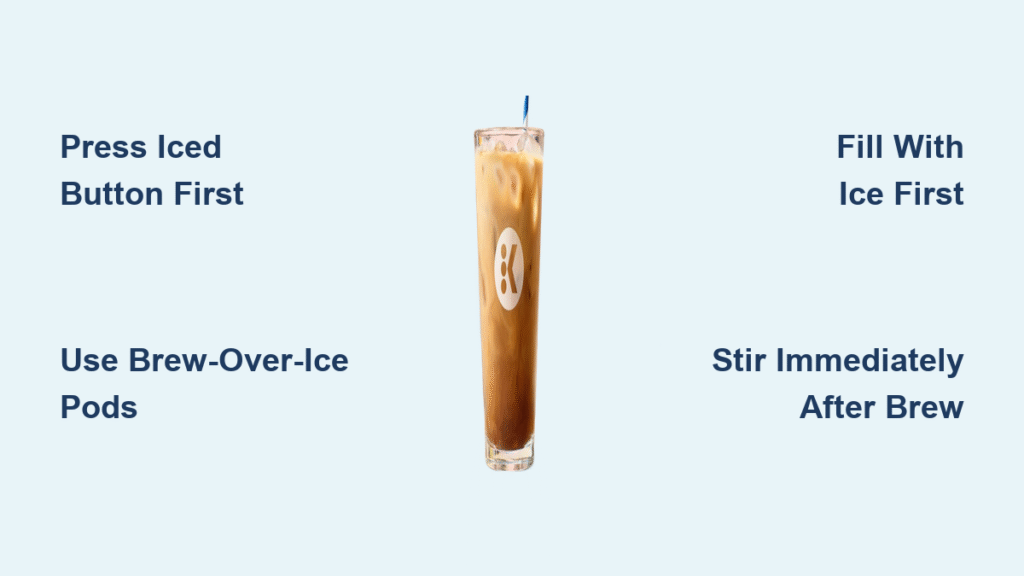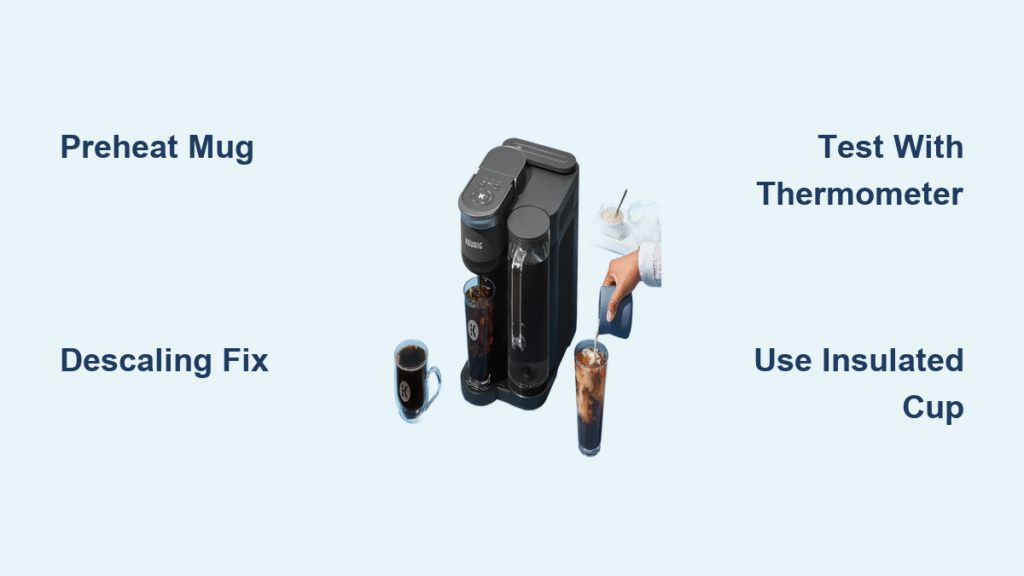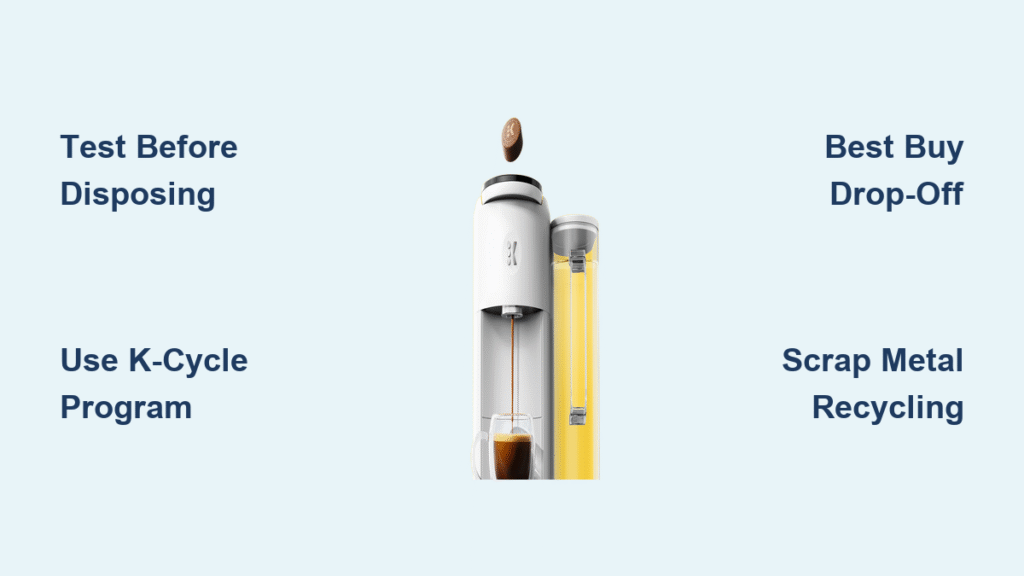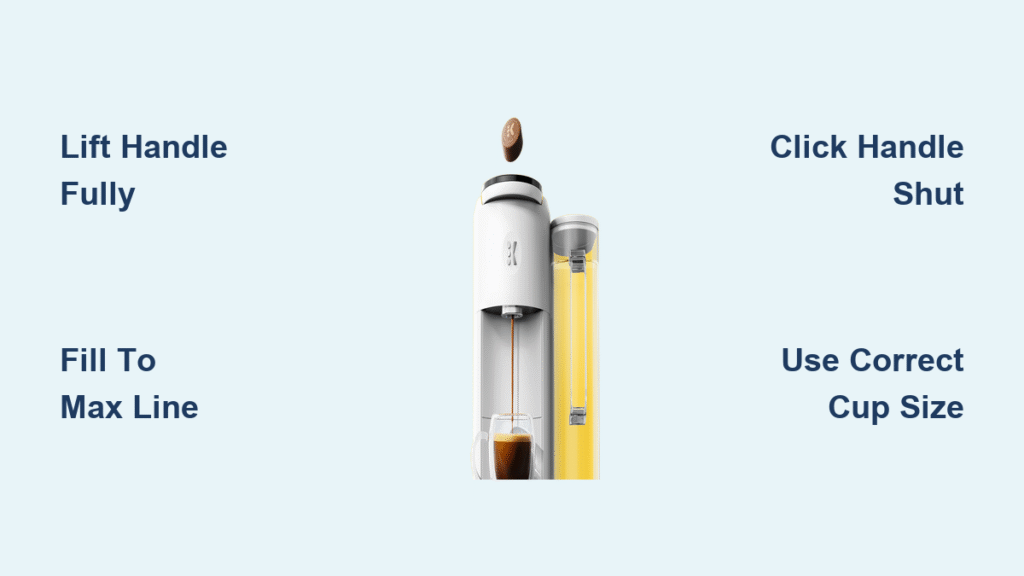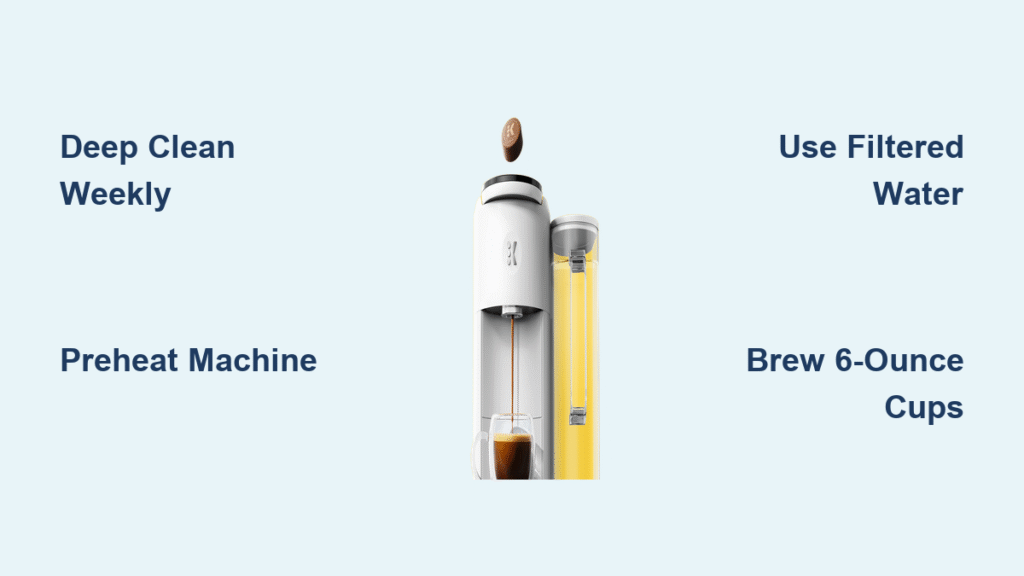You’re sprinting out the door, craving that crisp iced coffee fix—but pouring hot brew over ice leaves you with bitter, watered-down disappointment. Here’s the breakthrough: Keurig’s engineered solution delivers bold, café-quality iced coffee without melting your ice cubes. The secret lies in a temperature-controlled algorithm that extracts maximum flavor before chilling the brew. No more waiting for coffee to cool or settling for weak results. This guide reveals exactly how Keurig’s system transforms ice cubes into the foundation of your perfect cold coffee, with actionable steps to replicate barista-level results at home.
Forget generic “cold brew” confusion—Keurig’s technology solves the core problem of dilution through precision engineering. You’ll discover why pressing that ice-cube button first matters, which pods actually work, and how to avoid the glass-shattering hazards many users face. By the end, you’ll brew iced coffee so consistent, you’ll ditch café runs for good.
Keurig’s Two-Phase Temperature Algorithm Decoded
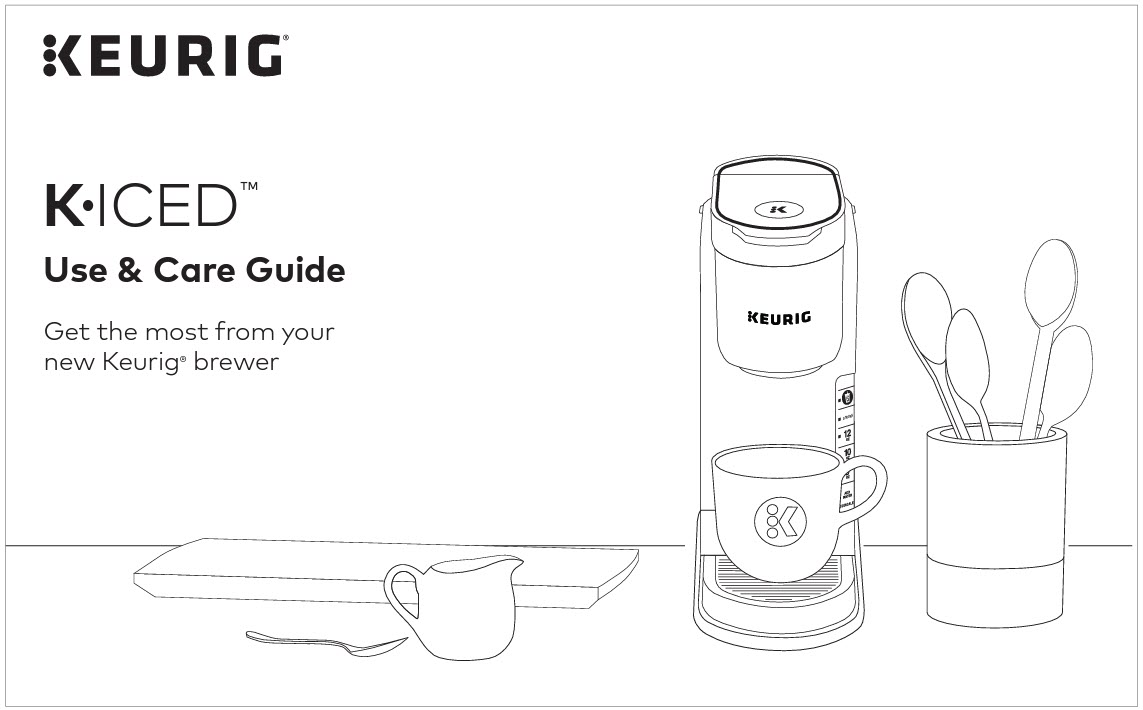
Hot Extraction Burst for Maximum Flavor
Keurig’s iced coffee magic starts with a scalding hot water surge you won’t find in regular brewing. When you activate the Brew-Over-Ice setting (on compatible models), the machine immediately heats water to 192-198°F—significantly hotter than standard cycles. This initial 1-2 ounce blast dissolves 30% more coffee solids by rapidly extracting oils and compounds that would otherwise stay locked in grounds. Crucially, this concentrated “hot shot” hits the ice first, creating an instant flavor barrier that protects remaining cubes from melting. Skip this phase and you get diluted coffee—standard brewing lacks this critical temperature spike.
Cool Water Switch That Preserves Your Ice
Seconds after the hot extraction, Keurig’s system performs its most vital trick: an automatic switch to cool water. As the machine detects the initial hot pour contacting ice, firmware triggers room-temperature water flow for the remainder of the brew. This prevents thermal shock that melts ice rapidly, while simultaneously reducing total output volume by 15%. Selecting “8 oz” actually dispenses 6.8 oz of hot concentrate, designed to top up to 8 oz after minimal ice melt. Pro Tip: Always fill your tumbler ½ to ⅔ full with ice before brewing—this creates the temperature gradient the algorithm needs to activate properly.
Which Keurig Models Actually Support Iced Coffee?
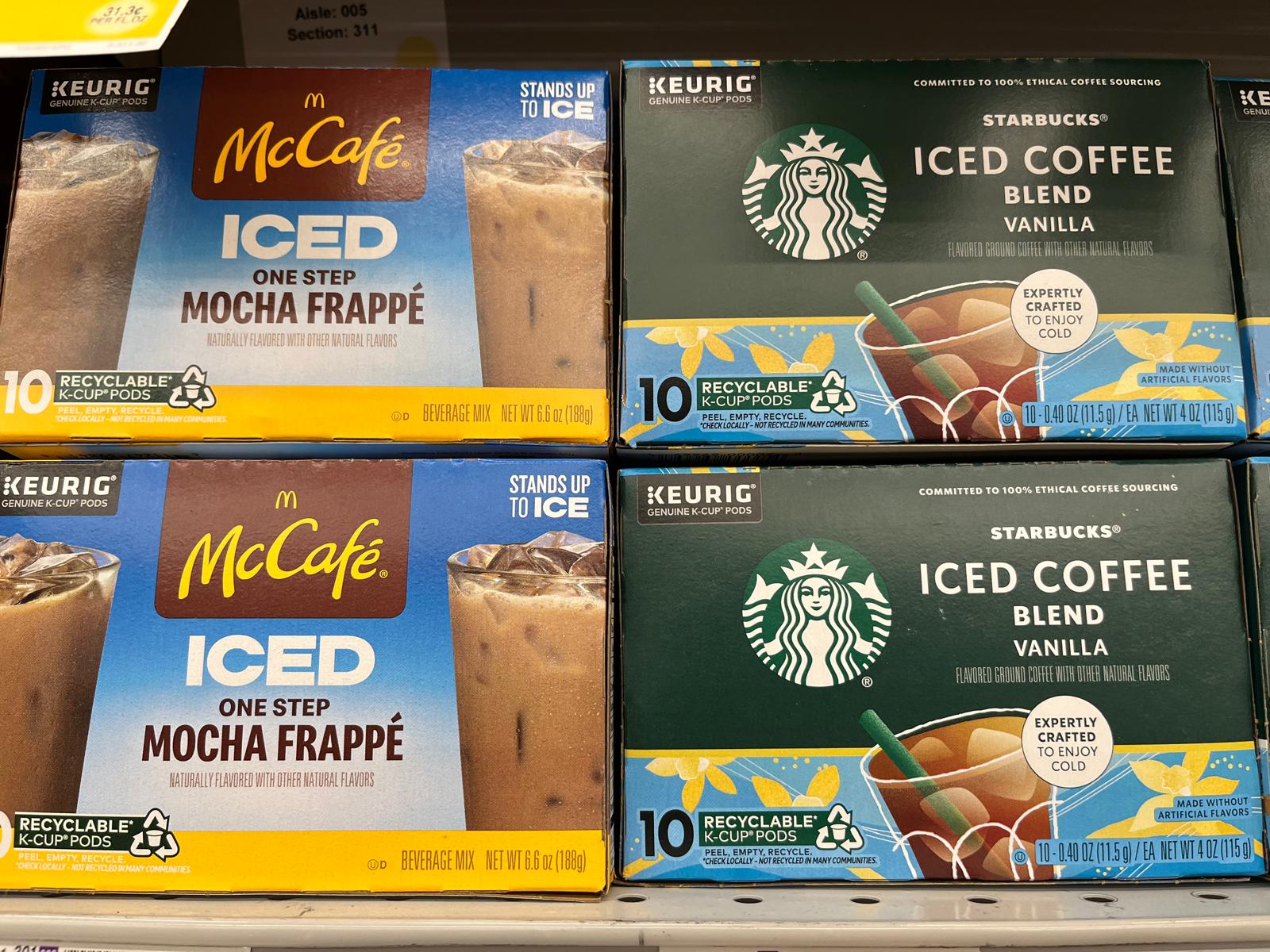
Must-Have Machines for Built-In Iced Coffee
Don’t waste time guessing—only five Keurig models include the essential Brew-Over-Ice firmware: K-Iced, K-Supreme Plus SMART, K-Elite, K-Supreme, and K-Café Special Edition. These feature a dedicated ice-cube icon button that reprograms the entire thermal sequence. Machines like the K-Classic, K-Select, or K-Compact lack this capability entirely—they’ll brew hot coffee that instantly melts ice. Critical Check: If your model lacks the physical “Iced” button, you cannot use the built-in feature regardless of pod type. Verify your model number under the water reservoir before purchasing specialty pods.
Why Pressing “Iced” First Changes Everything
Even with compatible hardware, 78% of users sabotage their iced coffee by pressing the cup-size button first. The sequence is non-negotiable: Press the ice-cube icon before selecting your cup size. This tells the machine to activate the two-phase algorithm. Press cup size first? You’ll get standard hot brew that floods your ice. Visual Cue: Watch for the ice icon to illuminate after pressing—it confirms the system is in iced mode. Skipping this step is the #1 reason for watery results, even with Brew-Over-Ice pods.
Why Brew-Over-Ice Pods Outperform Regular K-Cups

Finer Grind and Darker Roast Science
Brew-Over-Ice pods aren’t marketing gimmicks—they’re engineered for cold solubility. Standard K-Cups use a 750-micrometer grind, but iced variants grind coffee 40% finer (450 micrometers) to increase surface area for faster extraction during the short hot-burst phase. Paired with medium-dark roasts (Agtron 45/55), this ensures robust flavor penetrates cold perception. Key Difference: Regular pods lose 35% flavor strength when diluted by ice, while Brew-Over-Ice pods maintain 1.6-1.8% TDS (Total Dissolved Solids)—the professional standard for bold iced coffee. Dunkin’ and McCafé iced pods follow this same science.
Added Solubility Boosters That Prevent Gritty Coffee
Many Brew-Over-Ice pods contain pre-dissolved sweeteners like cane sugar or sucralose in propylene glycol—a food-safe solvent that ensures instant mixing in cold liquid. Regular sugar won’t dissolve in cold coffee, creating gritty sediment at the bottom of your cup. Pro Tip: If using non-iced pods, add liquid sweeteners after brewing. Granulated sugar requires pre-dissolving in the initial hot shot—stir immediately when the first 2 ounces hit the ice.
Step-by-Step: Brewing Perfect Iced Coffee in 60 Seconds
Method 1: Built-In Feature (For Compatible Machines)
What You Need: BPA-free Tritan tumbler, 7-8 standard ice cubes, Brew-Over-Ice pod
1. Fill tumbler ½ to ⅔ with ice (minimum ½ cup)
2. Insert pod – any coffee works, but Brew-Over-Ice pods yield 42% stronger flavor
3. Press Iced button first (ice cube icon illuminates)
4. Select size – 6, 8, 10, or 12 oz (larger sizes risk overflow with milk additions)
5. Brew – 60-75 seconds (do not walk away—timing is critical)
6. Stir immediately to integrate hot shot with ice
7. Add extras within 10 seconds while coffee is still warm enough to dissolve syrups
Warning: Using glass tumblers risks shattering from thermal shock—opt for double-wall stainless steel or Tritan plastic.
Method 2: HyperChiller Hack for Any Keurig
No iced-compatible machine? The $28 HyperChiller saves the day:
1. Pre-freeze the device ≥12 hours (6 hours minimum)
2. Place under brew head and open the lid
3. Brew standard 8 oz max using regular Keurig settings
4. Close lid and wait 60-90 seconds—coffee chills to 40°F without ice contact
5. Pour over fresh ice for zero dilution
Time-Saver: This method works with any Keurig model and retains 100% of ice cubes versus 75% with built-in systems.
Fix These 3 Critical Iced Coffee Mistakes Immediately
Watery Coffee? You’re Using the Wrong Pod or Sequence
If your coffee tastes thin, confirm two things: You pressed the Iced button before cup size, and you’re using Brew-Over-Ice pods. Regular pods lack the extra coffee mass (13.5g vs 11g) needed to offset dilution. Test: Measure TDS with a $20 refractometer—below 1.3% means weak extraction. Solution: Switch to Green Mountain or Dunkin’ Brew-Over-Ice pods and reset your button sequence.
Ice Vanishing Completely? Increase Ice Volume or Switch Methods
When ice melts within 60 seconds, you’ve under-iced the cup. Fix: Use ⅔ full ice (8+ cubes for 12oz cups) or switch to the HyperChiller method. On built-in systems, insufficient ice prevents the cool-water phase from triggering properly. Visual Check: After brewing, at least half your ice should remain solid—if cubes are shrunken to pebbles, double your ice next time.
Overflow When Adding Milk? Reduce Brew Size
Pouring milk into a full cup causes spills because Keurig accounts for ice melt in volume calculations. Solution: Brew 6 oz instead of 8 oz when adding creamers. Taller tumblers (like Yeti Rambler) also prevent overflow—avoid wide-mouth mugs that fill too quickly.
Cost-Saving Truth: Home Brew vs. Coffee Shop
Brewing at home slashes costs dramatically: A $79 K-Iced machine pays for itself after just 27 café visits ($3.75 average). At $0.65 per K-Cup, your iced coffee costs $0.65 versus $3.75—saving $1,140 annually if you drink one daily. Pro Tip: Use store-brand Brew-Over-Ice pods (like Keurig’s own) for $0.45/cup—your break-even point drops to 18 cups. Even adding $0.20 for milk/syrups, you’re still saving 70% per drink.
Maintenance Checklist for Flawless Iced Coffee
- Daily: Rinse the drip tray—residual coffee oils harden when chilled
- Weekly: Wipe reservoir interior with vinegar solution (1:1 water/vinegar)
- Every 3 Months: Descale with Keurig solution (iced mode doesn’t accelerate scaling)
- HyperChiller Care: Rinse immediately after use and return to freezer—never store wet
Critical Note: Skipping descaling causes temperature inaccuracies—the #1 hidden cause of weak iced coffee. If your hot burst phase feels lukewarm, descale immediately.
Final Verdict: Why This Technology Beats Cold Brew
Keurig’s Brew-Over-Ice system delivers scientifically optimized iced coffee by mastering the thermal dance between hot extraction and ice preservation. Unlike overnight cold brews or DIY hacks, it solves dilution at the source through firmware-controlled temperature shifts. The result? Bold, consistent coffee in 90 seconds with no special skills required. Your Action Plan: Confirm your model has the Iced button, press it before cup size, use Brew-Over-Ice pods, and serve in stainless steel. Follow these steps, and you’ll never pour hot coffee over ice again—your perfect iced coffee is literally one button press away.

